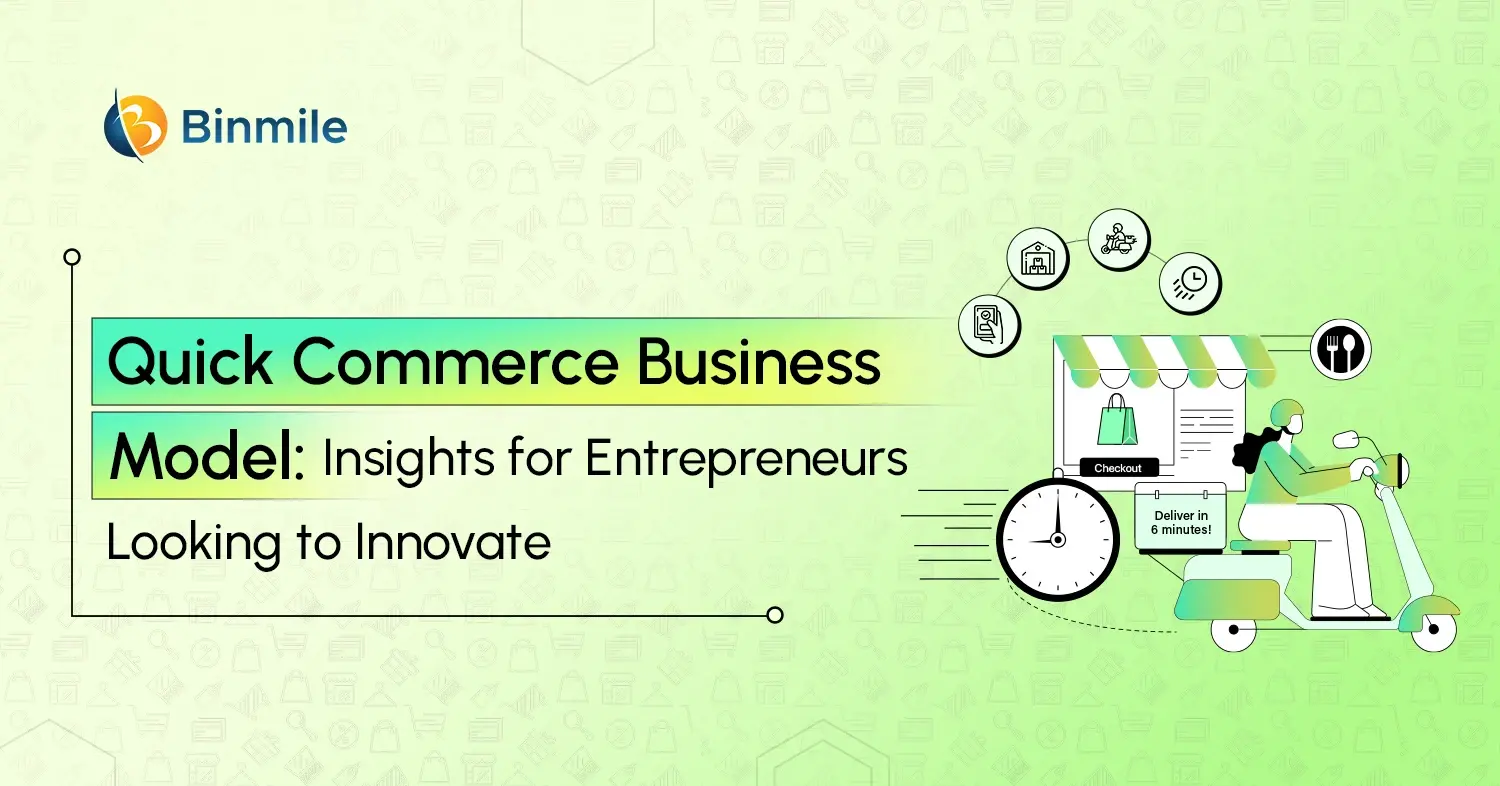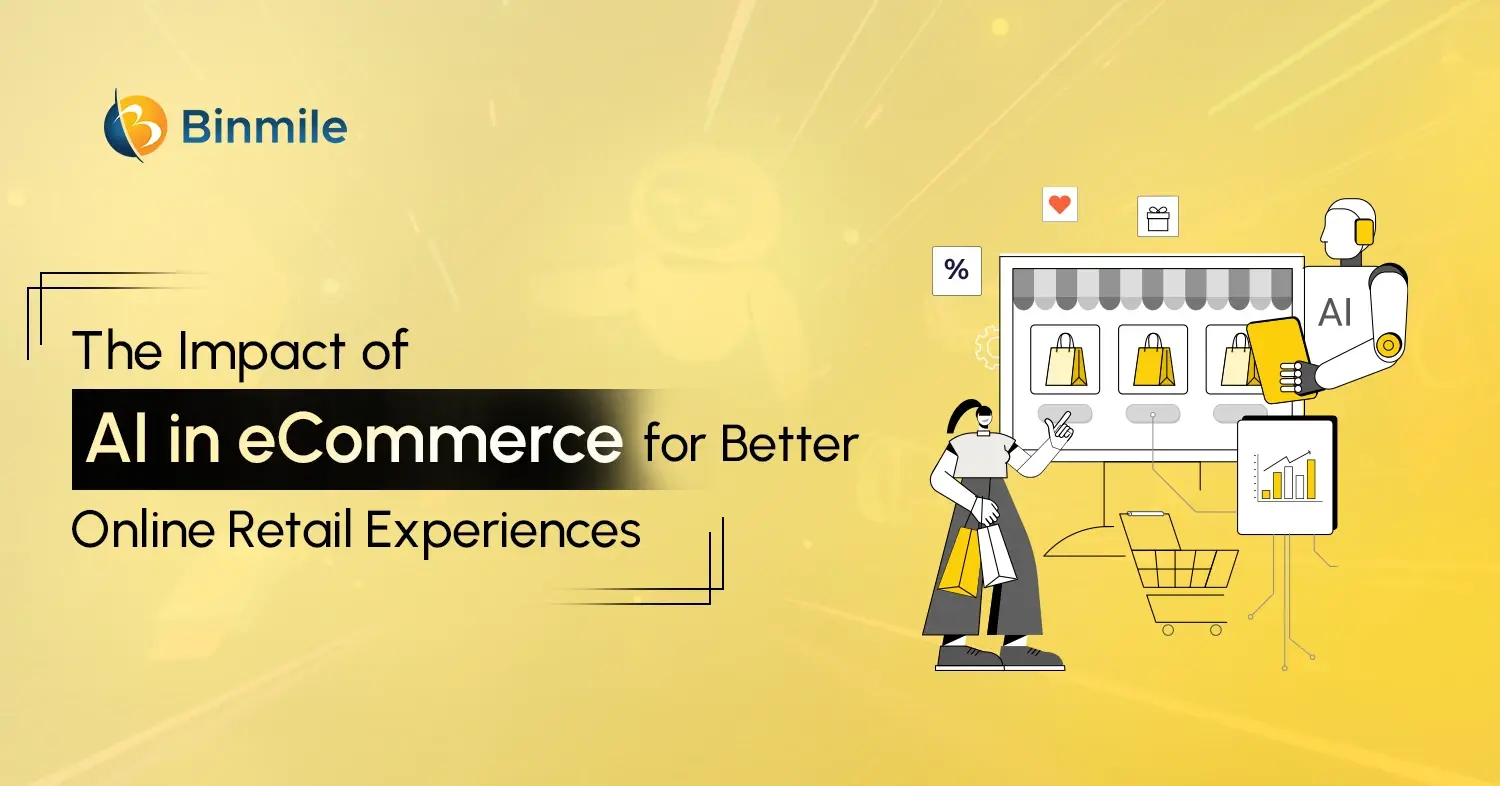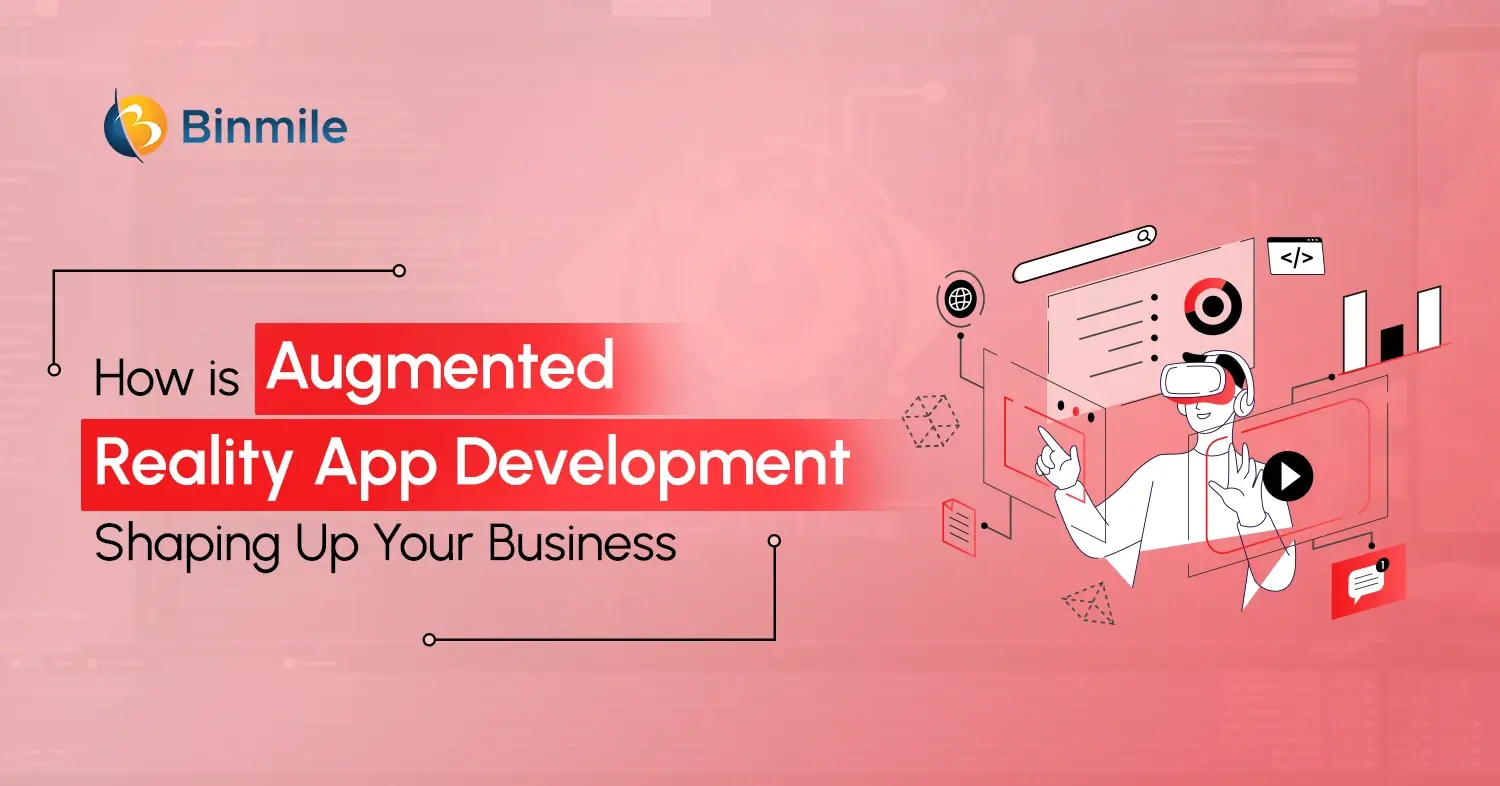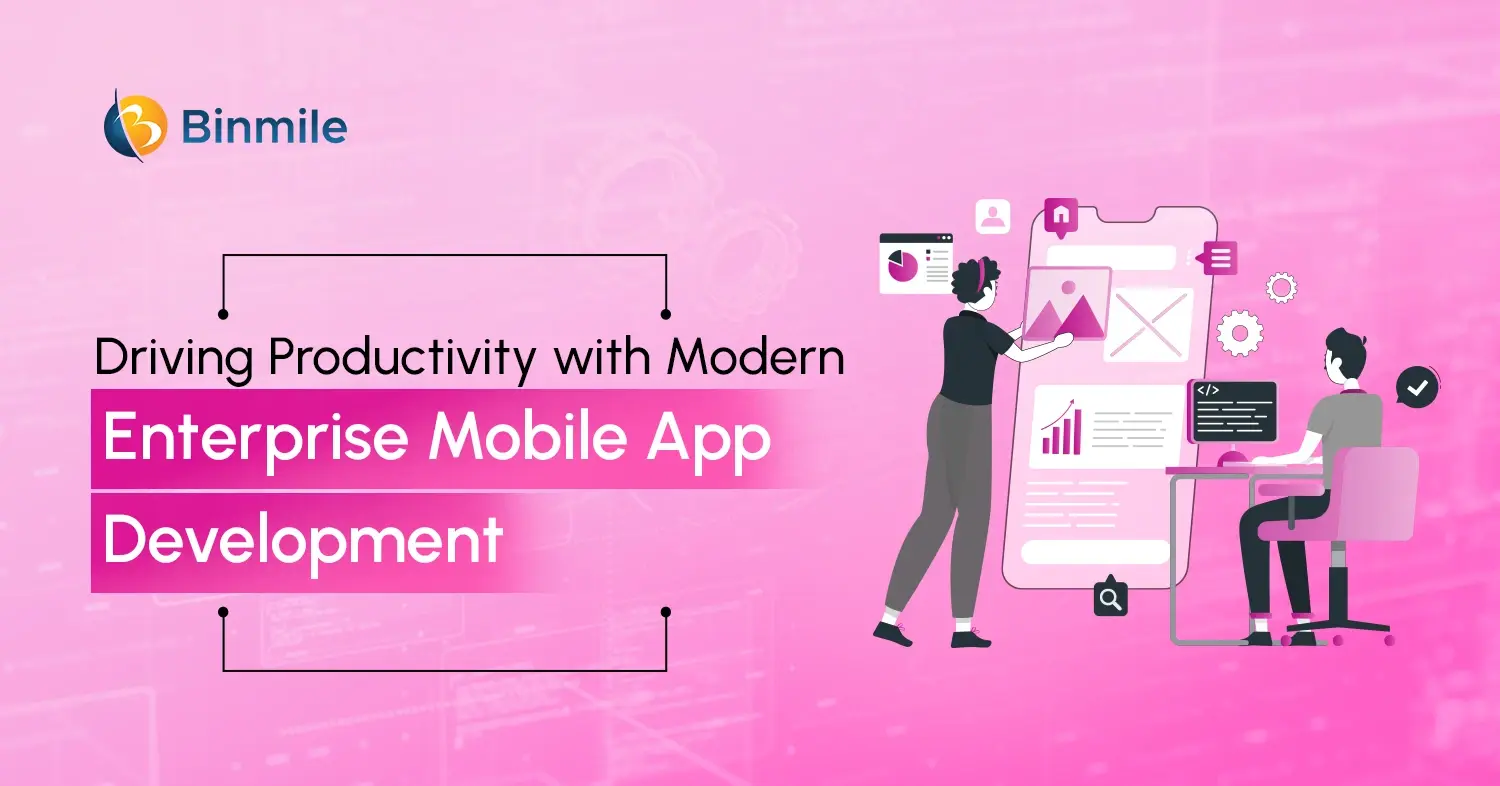Technology has streamlined various facets of our lives, such as working, eating, traveling, learning, and shopping online. While eCommerce has provided a convenient and economical shopping solution for retailers and customers, Quick Commerce, or Q-commerce, further advances this concept. It is revolutionizing online shopping for groceries, personal care items, and over-the-counter medicines with near-instant service, often within 10-30 minutes. This shift from traditional eCommerce to rapid delivery highlights technological advancements and evolving consumer expectations. Unlike traditional e-commerce, which focuses on a broader range of products and longer delivery windows, q-commerce thrives on immediacy, catering to consumers’ impulse and urgent needs.
The Indian q-commerce landscape has grown exponentially in the last five years and is expected to continue growing upward. Quick commerce companies in India, such as Blinkit, Swiggy Instamart, Zepto, and Dunzo, have transformed how urban Indians shop for essentials, leveraging technology and innovative business models to stay ahead.
According to Statista, the Quick Commerce market in India was valued at $3.34 billion in 2024 and is projected to reach $9.95 billion by the end of 2029. Therefore, it becomes essential to understand how this happened to grasp how this disruptive model works and what the future holds. In this blog, we explore the nuances of q-commerce, diving into its business model, key players, challenges, and prospects.
Understanding Quick Commerce Models: The Future of Shopping & Its Impact on Traditional Retail

What is Quick Commerce: Definition and Key Features
Q-commerce, short for Quick commerce, combines the characteristics of traditional e-commerce with advancements in last-mile delivery. This concept prioritizes the swift delivery of items, particularly perishable goods like groceries, aiming to fulfill orders in 30 minutes or less to maintain a competitive edge. Its key features include:
- Ultra-Fast Delivery: Deliveries are promised within 10-30 minutes, significantly faster than traditional e-commerce.
- Limited Inventory: Q-commerce platforms operate on a hyperlocal model, stocking high-demand items in smaller warehouses known as dark stores.
- Focus on Essentials: Q commerce primarily targets everyday essentials such as groceries, beverages, personal care items, and medicines.
- Technology-Driven Operations: Advanced logistics, AI-powered inventory management, and GPS tracking enable seamless operations and reduce delays.
Key Differences in Quick Commerce vs. Traditional E-Commerce
| Factors | E-commerce | Q commerce |
|---|---|---|
| Delivery Speed | 1-3 days | 10-30 minutes |
| Product Range | Broad, from electronics, appliances, and furniture to clothes | Focused on essentials, groceries, OTC meds, and makeup items, among others |
| Inventory Model | Centralized warehouses | Hyper-local Dark stores |
| Customer Base | Wide | Urban, convenience-driven |
Know the Difference: Q-Commerce vs e-Commerce
Transforming Q-Commerce: Introduction to Blinkit, Zepto, and Swiggy Instamart in India’s Quick Commerce Sector
The Gross Merchandise Value (GMV) of India’s quick commerce industry increased to $3.3 billion in 2023-24, compared to $500 million in the financial year 2021-22, registering a nearly 280% hike. This shift in consumer behavior towards faster and more convenient delivery options can be understood by the fact that the quick commerce industry has grown 73% annually in the financial year 2023-24. The credit goes to the top Quick commerce companies in India, such as Blinkit, Zepto, Swiggy Instamart, and Dunzo. These key players lead the charge in India and exemplify how q-commerce adapts to diverse consumer expectations.
In addition, e-commerce giants like Flipkart and Amazon are planning to enter India’s quick commerce market. For instance, Flipkart has intensified its efforts in this market and is expanding ‘Flipkart’s Minutes,’ covering around 150 dark stores and adding high-value items. The leading e-commerce player in India, Amazon, is reportedly testing its quick commerce delivery service, codenamed ‘Tez,’ with staff in Bengaluru and plans to launch the app as soon as possible this year.
India’s Quick Commerce Leaders: Blinkit, Zepto, and Swiggy Instamart’s Market Share & Growth
In 2024, Zomato-owned Blinkit commands a 46% market share, followed by Zepto at 29% and Swiggy Instamart at 25%. So, let’s briefly examine these top quick commerce companies in India, their journeys, and a sneak peek into their business models.
1. Blinkit

It was previously Grofers, one of India’s biggest quick commerce companies. Mainly aimed at delivering food within 10-30 minutes, Blinkit focuses on delivering groceries and other household items. It is located through many dark stores – small warehouses close to urban areas due to the increased demand for convenience and speed.
It launched the 10-minute food delivery app Bistro in Gurugram. The company recently started delivering electronics—laptops, monitors, headphones, and printers—within 10 minutes in major cities like Delhi NCR, Pune, and Mumbai. The q commerce leader is valued at $13 billion in 2024.
2. Zepto

The quick commerce market leader Zepto has pioneered the introduction of fast delivery of groceries in India within the next 10 minutes. In the premium and essential grocery segment, Zepto has achieved massive growth with the help of its technology-driven micro-warehousing model. The firm’s model is small and many and situated in different areas to ensure a quick turnaround time, given the increasing need, especially in urban centers.
The company raised $1.95 billion in 2024 and has a market value of $3.6 billion. It recently launched ‘Zepto Cafe’ in select metropolitan cities. The cafe offers a diverse menu, including breakfast options, freshly brewed beverages like chai and coffee, baked goods, and popular snacks like Maggi in 10 minutes.
3. Swiggy Instamart

Launched as a vertical of the well-known food delivery company Swiggy, Instamart aims to deliver groceries and other daily-use products to customers in large cities. Like other functions of Swiggy, and also focusing on speedy delivery, Instamart offers delivery in 4-10 minutes. The new service leverages Swiggy’s existing framework to improve grocery ordering, including supply chain, consumers, and delivery options.
Launched during COVID-19, Swiggy Instamart has expanded to 75+ cities across India and is planning to launch a standalone app for Instamart. With ‘Bolt,’ the food delivery giant has also entered the food business by offering quick delivery of certain food items within 10 minutes. One of India’s fastest-growing quick commerce companies, it had a gross revenue of $132 million in FY24.
Boost your Quick Commerce business with a seamless web app—scalable, reliable, fast, and built for growth!

Key Strategies of Quick Commerce Companies in India: How Blinkit, Zepto & Swiggy Instamart Are Redefining On-Demand 10-Minute Delivery
The experiences of Zepto, Blinkit, and Swiggy Instamart highlight the crucial elements that make the Quick Commerce (Q-Commerce) model work in a competitive and fast-paced environment. Here are the highlights of the business models all three top quick commerce companies in India operate through:

1: Importance of Dark Stores and Hyperlocal Warehousing
Zepto, Blinkit, and Swiggy Instamart utilize dark stores and small order centers that aren’t directly visible to consumers. This strategy enables them to showcase high turnover rates and maintain valuable stocks near customers. Dark stores effectively reduce the delivery cycle distance, facilitating more uncomplicated order deliveries.
For instance, to achieve 10-minute rapid deliveries, Zepto avoids delivering products more than a few kilometers away from the dark stores. By identifying dark stores in populated neighborhoods and busy town center areas, these companies can enhance the Q-commerce element of rapid delivery.
2: Utilizing Technology for Seamless Processes
Each of the three companies is highly dependent on technology within its organizations. It is embracing technologies such as AI-powered demand forecasting, optimizing movement routes, real-time inventory tracking, and optimizing to ensure that only in-demand products are always in stock. For instance, Zepto relies on predictive analytics to analyze demand forecasts and guarantee the appropriate stock of groceries and necessities in its dark stores at all times.
The primary technologies used by Blinkit and Swiggy Instamart for customers to track orders and deliveries and manage RTT, demand, and supply are similar. For example, during Swiggy Instamart’s launch, the business applied the same models as regular food delivery service because it still relies on Swiggy’s infrastructure to instantly deliver groceries and fast food.
3: Partnerships with Local Suppliers and Merchants
One significant procurement approach these companies employ is buying products from local manufacturers. Local suppliers, as partners, can curb lead times in restocking dark stores with fresh produce and perishable products for customers. Regarding its supply, Blinkit cites some of its strengths, such as engaging with local and regional suppliers to ensure the freshness of the products. The company can also deliver its products to customers without delay.
Zepto’s operations strategy involves forming supply partnerships with local grocery stores to acquire fresh stock and necessary products for quick purchases. These regional partnerships enable Q-commerce start-ups to quickly fine-tune their delivery mechanisms to consumer needs without dealing with extensive supply chains and large hubs.
4: Integration of Existing Infrastructure & Platform
Swiggy Instamart is a prime example of how quick commerce companies can leverage existing infrastructure. Swiggy’s pre-set-up resources, from delivery fleet customers to quick application adoption, allow them to scale rapidly in urban areas. Thus, when accessing Swiggy’s food delivery network, Instamart can use the logistics of Swiggy’s delivery cars, which already know the customers’ behavior and the most efficient routes, to deliver groceries as efficiently as food orders.
It dramatically reduces the overhead of building a new logistics network from the ground up, meeting all the associated costs. Similarly, Blinkit relies on its delivery partners from Zomato – its own affiliated riders and third-party contractors to reduce operational challenges necessitated by last-mile convenience.
5: Focus on Customer Experience and Personalization
All these quick commerce companies in India strive to ensure excellent customer satisfaction by providing services such as the ability to track orders, delivery preferences, and easy-to-use mobile applications. They have built a hassle-free and smooth grocery app development for customers that lets them scan products, place orders, and view deliveries in detail.
Besides, they appeal to customers directly through their apps and gather information about them; hence, they always offer suggestions, special offers or discounts, and loyalty programs to retain and attract new customers. Swiggy Instamart and Blinkit use the Swiggy and Zomato networks, which already have customers’ data from food deliveries. Thus, a grocery app can be tailored to customers’ preferences and experiences with one click.
6: Speed as a Differentiator in Competitive Markets
The delivery time of a food product is a key competitive advantage for all three firms. The necessity for fast delivery indicates that rapid delivery has turned into a necessity as Q-commerce has become a hotly contested market. For instance, the delivery time frame has often been standardized at 10 minutes by Zepto, which offers direct competition to Blinkit and Swiggy Instamart, which also average 4-10 minutes.
Quick delivery time is key to customer loyalty, especially in “impulse buying” (when consumers realize they need bread, butter, soda…, and other last-minute items). The rapid and accurate fulfillment of these needs is an effective weapon that Q-commerce companies can use in urban markets.
7: Balancing Delivery Speed and Operational Costs
Q-commerce companies struggle to sustain the fast delivery experience, which is one of their primary value propositions. Zepto, Blinkit, and Swiggy Instamart, the actual cost of real-time inventory, the variety of couriers, and the establishment of technology come with a price. Delivery optimization becomes a significant issue. Providing quick solutions whenever a problem does not break the company’s bank is always challenging.
For instance, Swiggy Instamart operates solely as a dark store and leverages the existing delivery network to optimize costs, thus avoiding such overheads. On the other hand, firms like Zepto and Blinkit are still looking to maximize their warehousing costs to guarantee an efficient supply chain while delivering within record time. All three also experiment with last-mile delivery methods, including electric bike delivery or small depots, to minimize the cost of providing products to consumers.
8: Expanding Reach and Scaling Operations
Market expansion remains a key source of growth for these firms, and their opportunities are closely associated with an increase in new and different markets. As they grow, they again have to consider issues such as market demand, population density, competition from local firms, and the availability of infrastructure. Zepto and Blinkit have also moved to several cities, targeting densely populated urban markets most congenial to Q-commerce.
While starting, they were restricted to big metropolitan cities like Mumbai, Delhi, and Bangalore, but now they are already planning for Tier 2 and Tier 3 cities and towns. Swiggy Instamart also grew very fast in many cities because customers trusted the Swiggy brand and were willing to use Instamart (recently, it expanded to 75+ cities). This scaling is made possible by applying big data analytics to anticipate where the demand for Q-commerce is most likely to rise next.
Also Read: Grocery Delivery App like Instacart
Mastering Key Challenges in Quick Commerce & How Companies Are Solving Them
Undoubtedly, going for q-commerce app development is a promising venture, and running a quick commerce business will open various opportunities. However, there are specific challenges that you should know so that you can also overcome them to realize the potential of these promising ventures fully:

1. High Operational Costs
Creating a web of hyperlocal dark stores, establishing and expanding the delivery fleet, and developing robust technologies to support the entire process is quite costly. Other expenses, such as product inventory costs, training drivers separately, and customer attraction, add to these costs. Therefore, companies are increasingly using automation, predictive analytics, and strategic partnerships to help them edge out their competitors while maintaining affordable prices for their goods and services to increase efficiency and minimize costs.
2. Logistical Complexities
The promise of delivering in a few minutes requires sequenced coordination and flawless time management, but attempting to do this during rush hour in a city is no easy task. Poor weather and infrastructure constraints exacerbate the difficulties. This is why the top quick commerce companies in India are introducing micro fulfillment centers, AI-driven route optimization, and real-time traffic monitoring to mitigate delays and ensure swift and on-time deliveries.
3. Customer Retention in a Crowded Market
The high competition from multiple platforms and the competition for other Q-commerce apps make it challenging to retain customers and attract new ones. Moreover, using discounts and promotions eats into profitability, underlining the importance of sustainable loyalty. The platforms are shifting towards personalized services, dedicated subscription services, and gamified user interfaces that will bring more repeat business and foster brand loyalty.
4. Regulatory and Legal Hurdles
The company must comply with local storage, delivery, and labor relations regulations. Some of Q-commerce’s concerns include food hygiene requirements, delivery workers’ remuneration, and the licensing of dark stores. Quick commerce companies in India must frequently engage policymakers to follow ethical labor practices, which can help avoid many legal issues and improve their functioning.
5. Environmental Sustainability
The current demand for speed comes at the cost of sustainability, as increased delivery usage contributes to an increased carbon footprint. Consumers also have to worry about single-use packaging. Therefore, to address this issue, q-commerce companies have started adopting initiatives such as switching to electric vehicles, using biodegradable packaging, and implementing reusable bag programs to minimize their environmental footprint.
Build a cutting-edge on-demand app for your Q-Commerce business—optimize delivery, enhance customer satisfaction, and drive growth.

Conclusion
We have seen so far that the rapid rise of Quick commerce reflects how it has transformed the retail landscape, making it one of the most innovative and lucrative business models in today’s fast-paced market. As we have seen globally, key strategies such as optimizing last-mile delivery, leveraging technology, and building strong supply chain capabilities are vital for Q-commerce players to thrive. The quick commerce sector in India is booming, driven by the growing urban population and modern consumers and their changing behaviors. Quick commerce companies in India and leading key players such as Blinkit, Zepto, and Swiggy Instamart have set the stage for a highly competitive market where speed, convenience, and customer experience are paramount.
As the Indian market embraces Q-Commerce, businesses must remain agile, innovate continually, and provide exceptional value to stay ahead in this ever-evolving space. Looking ahead, companies in the Q-commerce space must remain adaptable, focus on building a robust infrastructure, and constantly innovate to stay competitive. If you also want to develop a quick commerce app for your business and capitalize on the growing demand for Q-commerce, our on-demand app development services can help. We specialize in crafting robust and responsive applications that seamlessly connect businesses with their users in real time.
Ready to build the next-gen quick commerce app? Explore our q-commerce solutions by booking your free consultation right away!
Frequently Asked Questions
Zepto is carving a niche with its 10-minute delivery promise, leveraging hyperlocal dark stores and AI-powered inventory management to stay ahead. Unlike competitors, Zepto focuses heavily on premium grocery delivery and recently launched the ‘Zepto Café’ offering beverages, snacks, and quick meals.
- Hyperlocal model ensures reduced delivery times.
- Partnerships with local suppliers maintain fresh stock.
- Innovative offerings like ready-to-eat snacks and beverages differentiate it from competitors.
The best platform depends on individual needs.
- Blinkit: Best for household items and tech gadgets.
- Zepto: Excels in ultra-fast delivery of premium groceries.
- Swiggy Instamart: Ideal for diverse daily essentials and leveraging Swiggy’s extensive delivery network.
Compare based on your location and product preferences.
A dark store is a warehouse designed exclusively for online order fulfillment, inaccessible to walk-in customers. These stores are strategically located in densely populated urban areas to enable faster delivery.
- They stock high-demand essentials in smaller quantities.
- Reduce the distance between inventory and customers.
- Operate with advanced inventory management systems for efficiency.
Quick commerce platforms are increasingly adopting sustainable practices to minimize environmental impact.
- Use of electric delivery vehicles to reduce carbon emissions.
- Biodegradable packaging and reusable delivery bags to combat waste.
- Optimized delivery routes to lower fuel consumption.
These initiatives are gradually aligning Q-commerce with green business practices.
While Q-commerce is thriving in urban markets, its expansion into rural areas presents both opportunities and challenges.
- Tier 2 and Tier 3 cities are being targeted due to growing demand.
- Logistical issues like lower population density and infrastructure gaps may slow adoption.
- Companies need innovative strategies to adapt hyperlocal models to rural needs.
Gradual growth in rural areas could unlock untapped potential for Q-commerce players.
Challenges include high operational costs, maintaining inventory across micro-warehouses, rider safety, optimizing last-mile delivery, and ensuring consistent customer experience. Balancing speed with profitability is a key hurdle for sustainability. Additionally, quick commerce players face intense competition, making customer acquisition and retention expensive. Inventory mismanagement, unpredictable demand patterns, and workforce attrition (especially among delivery personnel) also add to the operational burden. Regulatory issues around labor laws and urban logistics can further complicate scalability.









